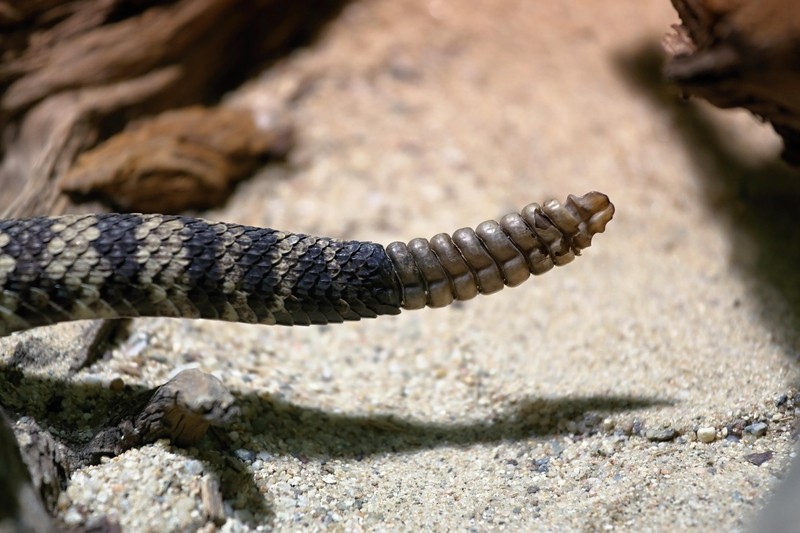Rattlesnakes are only responsible for a single-digit number of deaths in the U.S. annually, which is great news for most people in their habitat but not so great news for those few people who are killed. In order to keep yourself off that list, it's best that you learn to identify these snakes early on. Learn more about them below.
Timber rattlesnake (Crotalus horridus)
Sometimes called a canebrake rattlesnake, these snakes found in the Eastern United States. According to the New Hampshire Fish and Wildlife Department, they are large, regularly growing up to 5 feet (1.5 m) long, and have a large banded or chevron-shaped brown and black pattern. However, it is hard to see the brown pattern on some snakes, and they look uniformly black. On others, the background is tan and their bands are clearly brown. According to the Florida Museum of Natural History, timber rattlesnakes in the Sunshine State and other parts of the South are lighter colored with a reddish brown stripe running down the center of their backs.
Eastern diamondback (Crotalus adamanteus)
According to National Geographic, these are the largest venomous snakes in North America, reaching up to 8 feet (2.4 m). They are found from North Carolina to Louisiana. They have a visually striking yellow-bordered black diamond pattern.
Western diamondback (Crotalus atrox)
At up to 7 feet long (2 m), this is the largest of the Southwestern rattlers and considered the most dangerous. According to the ADW, it causes more fatalities than any other snake in the United States. Its back is covered with dark diamond-shaped patches lined with lighter scales, and according to the Arizona-Sonora Desert Museum, its rattle has a unique black-and-white, raccoon-like color scheme. Unlike many other rattlers who flee, the Western diamondback will stand its ground, coil, and hiss when threatened.
Tiger rattlesnake (Crotalus tigris)
A small rattlesnake reaching less than three feet (1 m), this Southwestern rattlesnake has extensive cross-banding and the smallest head of any rattler, according to the ADW. Its bands may be brownish or gray in color on a brown or orange-ish background. Its head is small in proportion to its body, so it holds less venom — though it is no less potent.
The species of rattlesnake makes a difference because each one has a different toxicity than the others and has different reactions to people.
Almost all rattlesnakes will bite–they aren't shy about that–but around 30% of bites turn out to be “dry” bites, in which the snake didn't transfer any venom. Deaths usually occur when the person delays receiving treatment (as would likely be the case in a bug out scenario) or if the person has a severe allergic reaction to the snakebite.
The main reason you should learn to identify the species: so you can report the species to the hospital if you are bitten.
Species can make a big difference in treatment options, and it will make your doctor's job much easier if you can give them that information.
This is some important information any prepper should live by. Learn the snakes and other dangerous predators in your area and how to avoid them. For more information and, go to Live Science.
